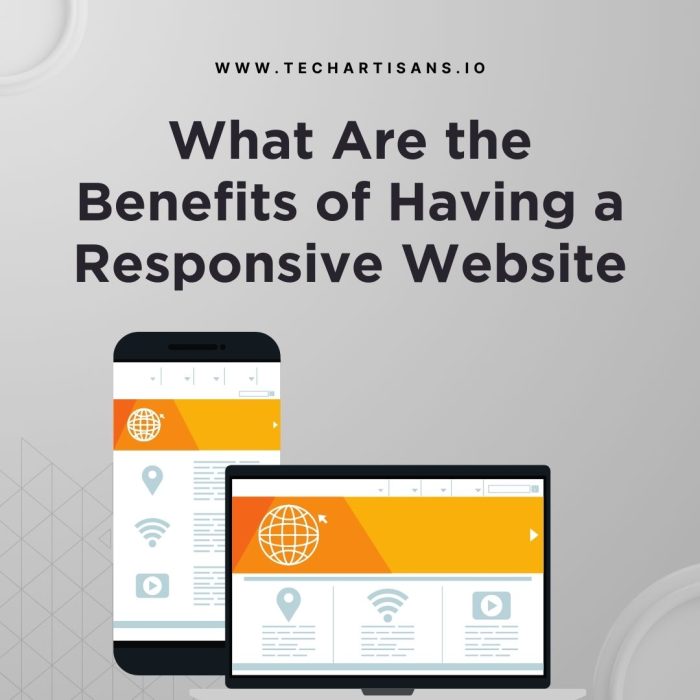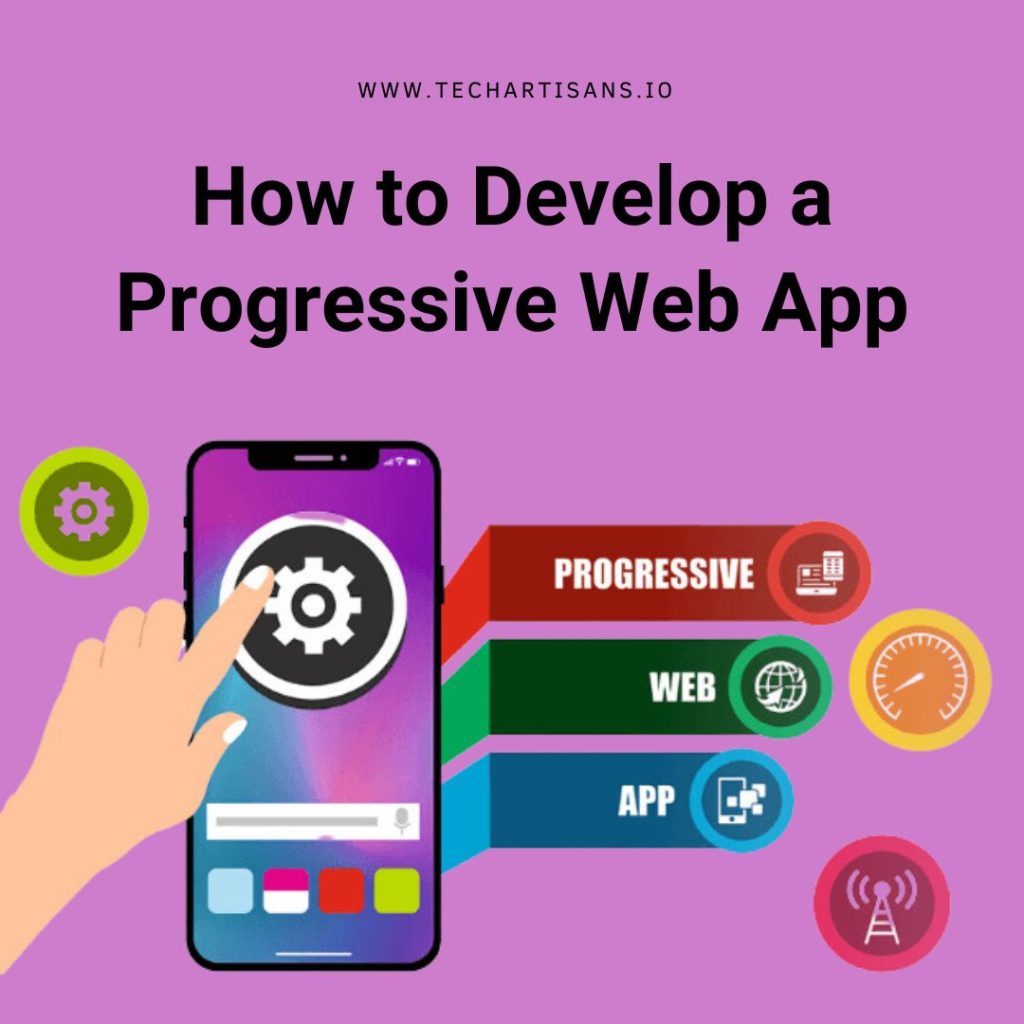Responsive web design is essential in today’s digital landscape, ensuring seamless functionality on all devices. Mobile-friendly sites enhance user experiences, boosting online presence and attracting potential clients. With mobile browsing surpassing desktop, responsiveness is invaluable for web success, making it an essential design approach.
Benefits of Having a Responsive Website
The benefits of having a responsive website are manifold, offering improved user engagement, increased traffic, and an edge over competitors in today’s increasingly mobile-first world.
Responsive Website
Responsive Web Design (RWD) is a design and development approach that allows a website’s layout to change according to the screen size and orientation of the device on which it is viewed. It enables images and grids to adjust fluidly and uses flexible images and CSS media queries to achieve visual consistency across various device types and screen sizes.
Rise of Mobile Browsing
Mobile browsing has skyrocketed, overtaking traditional desktop browsing in popularity and frequency. This growing trend highlights the urgent need for businesses to adopt a responsive web design, ensuring their websites are fully accessible and user-friendly, no matter the device used.
Statistics On Mobile Internet Usage
Over 52% of global web traffic originates from mobile devices, and around 4 in 5 US adults own smartphones, spending about 3 hours daily on them. These statistics highlight the prevalence of mobile browsing, emphasizing the need for responsive web design to cater to this mobile-savvy audience.
Mobile’s Impact on Consumer Behavior
Consumer behavior has shifted to mobile, with smartphones being a common choice for shopping, information-seeking, and entertainment. Responsive web design is now crucial for businesses to meet these demands by providing accessible and visually appealing content on mobile devices.
Enhanced User Experience Across Devices
A consistent browsing experience across various devices is paramount. It eliminates the frustration of poorly displayed content, fostering trust and credibility in your brand.
Maintaining Brand Consistency
Responsive web design ensures your website maintains consistent branding, styling, and functionality across all devices. It conveys professionalism and attention to detail, enhancing user perception of your brand.
Seamless Navigation and Functionality
With responsive design, website navigation and functionality remain seamless, irrespective of the device used. This enhances user experience, increases on-site time, and potentially boosts conversions.
Scalability for Future Devices
Responsive websites are future-proof and capable of adjusting to new device sizes and orientations. This ensures your site continues delivering a consistent and quality browsing experience.
Adapting to Screen Sizes
Responsive web design uses flexible grids, layouts, and CSS media queries to ensure content readability and easy navigation, regardless of screen size. It adapts to various devices, ensuring a consistent user experience, present and future. It’s fluid, filling any space while maintaining form and contributing to a modern online presence.
Improved Website Speed and Performance
An efficient website isn’t just about looking good. It’s about performing quickly and smoothly, too. This is where responsive web design shines, significantly improving website speed and performance to deliver a seamless online experience.
Impact of Loading Times On User Retention
Faster loading times enhance user experience, reduce bounce rates, and boost engagement, improving conversion rates. Slow loading times frustrate users and drive them away. Responsive web design plays a role in optimizing loading speed.
Techniques in Responsive Design that Improve Speed
Responsive web design enhances loading speed through techniques like adaptive image rendering and efficient coding. This ensures images load appropriately, reducing data usage and eliminating redundant code, making the website faster.
SEO Advantages of Responsive Design
Search engine optimization (SEO) is critical to any successful online presence, and responsive web design offers significant benefits in this area. Google, the world’s largest search engine, clearly prefers mobile-friendly websites. Let’s delve into the SEO advantages that a responsive website provides.
Enhanced Visibility
Google’s algorithms favor websites designed with mobile users in mind. A responsive design increases your site’s visibility in search results, amplifying your reach to potential customers.
Improved Rankings
Responsive web design is a significant factor in Google’s ranking system. Websites optimized for mobile use tend to secure higher rankings on search engine result pages (SERPs), attracting more organic traffic.
Lower Bounce Rates
Google monitors user engagement levels. A responsive design keeps mobile users on your site longer, reducing bounce rates and signaling to Google that your site is user-friendly—this boosts your SERP ranking.
Single URL Structure
A single URL for desktop and mobile versions of your site simplifies Google’s indexing process, leading to improved SEO performance.
Responsive Design In SEO and Ranking
Responsive web design is crucial in SEO and ranking by ensuring a seamless and efficient user experience. It optimizes your website for different devices, improving its visibility and usability. This positively impacts metrics such as bounce rates and time on site, which are vital ranking factors in Google’s algorithm.
Lower Development and Maintenance Costs
Responsive web design brings lower development and maintenance costs, proving to be a cost-effective choice for businesses striving for a robust online presence.
Costs of Separate vs. Responsive Sites
Developing and maintaining separate mobile and desktop versions of a website can be costly and time-consuming. Each requires distinct coding, updates, and optimizations. Conversely, a responsive website condenses your web presence into a single platform. This unified approach simplifies development and ongoing maintenance, saving significant cost and time.
Efficiency of Managing One Site
Managing a single responsive website is highly efficient. With one codebase, updates and improvements must be done only once, reducing administrative overhead. It eliminates the complexities of managing multiple versions, ensuring consistency in design and content across all devices.
Reduced Bounce Rates and Higher Conversion
One of the most compelling benefits of having a responsive website design lies in its ability to reduce bounce rates and ultimately drive higher conversions. Let’s examine how this works.
Prolonging User Engagement
Responsive web design ensures that your website adapts to the device it is being viewed, providing an optimal user experience. The fluidity and adaptability of a responsive site keep users engaged, encouraging them to stay longer on the site and explore more content.
User Experience vs. Conversion Rates
The user experience on a website is intrinsically linked to its conversion rates. A responsive web design that offers a seamless and intuitive user experience helps build trust and engagement among visitors. A user-friendly interface, easy navigation, and quick loading speed create a positive user experience.
Simplified Analytics and Reporting
With responsive web design, tracking user journeys, conversion paths, funnels, and redirections significantly simplifies analytics and reporting.
Singular View of Analytics for All Devices
With a responsive website, you can consolidate your analytics and reporting into a singular comprehensive view instead of scattering it across multiple site versions. This streamlined approach offers a holistic understanding of your site’s performance across all devices, making tracking key metrics and user behavior easier. The result is more efficient data analysis, better-informed decision-making, and a clearer path to optimizing your website for higher conversions.
Simplified Strategy and Decision-Making
A unified analytics view simplifies strategy and decision-making by providing clear, precise, and comprehensive data. It facilitates accurate monitoring of your website’s performance across all devices. This knowledge aids in identifying user patterns, understanding their preferences, and tailoring strategies accordingly. The result is more targeted decision-making, optimizing your responsive web design for better engagement and higher conversion rates.
Social Media Integration and Sharing
In today’s digitally connected world, social media integration and sharing capabilities have become vital features of an effective, responsive web design, offering many benefits for businesses.
Social Media Integration with Responsive Sites
Responsive web design allows for easy integration with various social media platforms, making content sharing effortless. It promotes wider reach and engagement as users can seamlessly share your content across different networks directly from your website.
Social Media to Website Transition Benefits
A seamless transition from social media to your website significantly enhances the user experience. Responsive web design ensures that content views and navigates smoothly across different devices. This smooth transition helps maintain interest and engagement, encouraging users to explore more of your site after clicking through from a social media platform.
Future-Proofing Your Business
Let’s explore how a responsive website can fortify your business against future technological changes.
Adaptability of Responsive Design to Future Devices
Responsive web design is inherently flexible. This flexibility stems from the design’s ability to adapt to any screen size, regardless of the device. Thus, as new devices (with different screen sizes and formats) emerge, your website will be ready to accommodate them. This adaptability makes responsive web design a forward-looking investment, ensuring your website maintains its usability and aesthetics regardless of technological advancements
Evolution of Web Browsing Behaviors
As technology evolves, so do web browsing behaviors. Responsive web design caters to these changes by being flexible and adaptable. It aids in accommodating new browsing habits, be it voice search, gesture-based navigation, or augmented reality interactions. This flexibility allows businesses to stay relevant and deliver efficient user experiences, irrespective of how web browsing evolves.
Conclusion
Responsive web design isn’t just about looking good on all devices. It’s your secret weapon in the digital age. It makes your site user-friendly and integrates seamlessly with social media, simplifying everything. Plus, it’s like an insurance policy for the future of your business because it adapts to new technology. In short, responsive design is your ticket to growth and long-lasting success in the ever-changing digital world.







